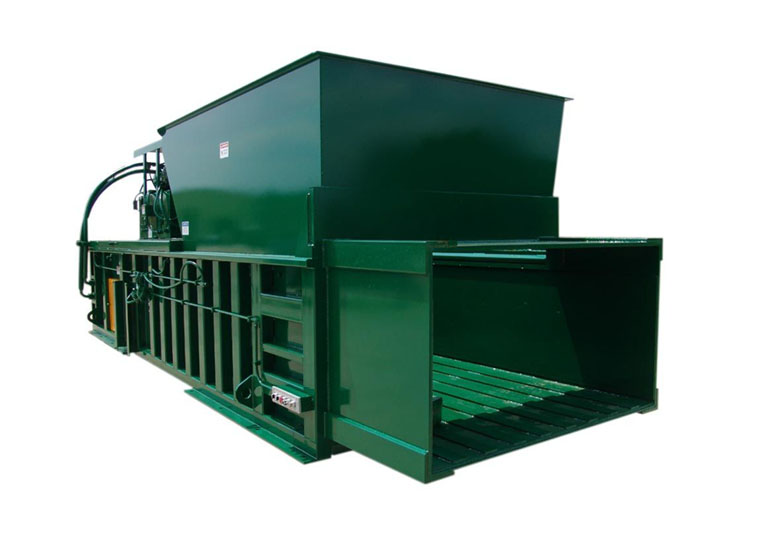Trustworthy Baler for Rent for Cardboard and Plastic Compression
Trustworthy Baler for Rent for Cardboard and Plastic Compression
Blog Article
Discovering the Important Function of Waste Devices in Modern Recycling Processes and Sustainable Waste Disposal Practices
The critical duty of waste devices in modern reusing procedures emphasizes its relevance in accomplishing sustainable garbage disposal practices. Advanced systems, such as automated sorting innovations and compactors, not only enhance performance however also play a crucial duty in decreasing contamination prices and enhancing material healing. As the need for even more sustainable remedies grows, it is necessary to take a look at how these modern technologies adapt to evolving difficulties within waste management. What ingenious advancements are on the horizon that could even more change these procedures?
Significance of Waste Devices
Why is waste tools essential in the reusing procedure? The effectiveness of recycling operations hinges dramatically on the schedule and performance of waste devices. This group of equipment and devices is important for the effective collection, handling, and sorting of recyclable products. By facilitating the separation of materials, waste equipment reduces contamination, which is vital in making certain premium recyclables that can be reestablished right into producing cycles.
Moreover, waste tools enhances functional effectiveness and security within reusing facilities. Advanced equipment, such as shredders and balers, enables for the rapid handling of huge volumes of waste, decreasing labor costs and processing time. In addition, making use of specific tools decreases the threat of injury amongst employees by automating harmful tasks.
Furthermore, the ecological influence of recycling is magnified by efficient waste equipment. By enhancing the recycling procedure, centers can significantly decrease the volume of waste sent out to garbage dumps, thereby adding to sustainability efforts. In verdict, waste tools is not simply an ancillary part of recycling; it is a fundamental element that drives effectiveness, safety and security, and environmental stewardship in modern-day waste administration practices.
Sorts Of Waste Tools
The effectiveness of reusing procedures is closely connected to the certain kinds of waste devices made use of while doing so. baler rental. Numerous categories of equipment are important to the collection, sorting, processing, and transport of recyclable products
Firstly, collection devices, such as waste collection vehicles and containers, is crucial for collecting recyclables from different sources, consisting of domestic, business, and industrial locations. When gathered, arranging devices, including conveyor belts, shredders, and magnetic separators, plays a critical function in distinguishing different material types, making certain that contaminants are removed before processing.
Processing devices, such as balers and compactors, additionally prepares products for recycling by pressing and packaging them right into convenient dimensions. This not just maximizes space but also enhances transportation effectiveness. Additionally, specialized equipment like granulators and extruders is made use of for transforming products right into multiple-use types, particularly in plastic recycling.

Function in Recycling Procedures
In recycling procedures, the duty of waste devices is learn the facts here now crucial in guaranteeing effectiveness and performance at every stage. This devices incorporates a series of equipment designed to handle, procedure, and type materials that are to be recycled. The preliminary stage involves collection and transport, where compactors and balers play an important her comment is here role in optimizing the volume of products for transportation, hence lowering operational expenses.
When at the reusing center, shredders and crushers enter play, breaking down products right into manageable sizes appropriate for more handling. These equipments add to boosting the area of recyclables, assisting in more effective product recovery. Arranging systems, equipped with advanced innovations such as conveyor belts and optical sensing units, make certain that materials are precisely divided by kind, consequently making the most of the high quality of the recycled end product.
Furthermore, specific devices for processing particular materials-- such as glass, plastics, and metals-- ensures that each type is handled in the most effective fashion. On the whole, the integration of sophisticated waste devices into the recycling process not just streamlines procedures yet likewise considerably adds to the overall recovery prices of beneficial products, highlighting its necessary function in contemporary reusing initiatives.
Influence On Lasting Practices
Via the effective operation of waste equipment, reusing processes significantly boost sustainable techniques throughout different industries. This impact is realized through raised product recovery prices, which decrease the need for virgin sources. By enhancing sorting and processing features, advanced waste tools lessens contamination in recyclable materials, thus improving the top quality of recycled outcome. The decrease of waste sent to landfills is one more critical advantage, as it lessens ecological degradation and minimizes greenhouse gas discharges related to decay.

In addition, the integration of clever innovations in Recommended Site waste monitoring systems permits real-time data tracking and evaluation, resulting in even more educated decision-making and functional effectiveness. As sectors progressively focus on sustainability, the function of waste devices becomes extremely important fit techniques that align with ecological stewardship and regulatory compliance. Eventually, the synergy in between waste equipment and recycling procedures plays a vital function in advancing wider sustainability goals throughout areas and industries alike.
Future Patterns in Waste Administration
Arising trends in waste monitoring are poised to reshape the landscape of reusing and source recovery dramatically. One of one of the most crucial shifts is the combination of innovative innovations such as man-made knowledge, artificial intelligence, and the Net of Points (IoT) These innovations help with enhanced sorting procedures, boosting the performance and accuracy of recycling operations. Smart waste bins geared up with sensing units can check waste degrees in real-time, optimizing collection routes and decreasing operational costs.
Furthermore, the circular economy model is gaining grip, promoting the concept of recycling products rather than taking care of them. This fad motivates services to create products with end-of-life considerations in mind, driving the demand for cutting-edge waste administration services.
Moreover, public awareness and involvement in sustainability methods are on the rise, bring about boosted involvement in recycling programs. Government plans are likewise developing, with more stringent regulations on waste disposal and incentives for sustainable practices.
As these fads merge, they develop a much more efficient, sustainable waste administration system that not only minimizes environmental influence yet also fosters financial growth via resource recuperation and technology in waste equipment. The future of waste administration looks promising, driven by technology and a dedication to sustainability.
Final Thought
In conclusion, waste devices plays an essential duty in enhancing the effectiveness and effectiveness of contemporary reusing processes. As waste management continues to develop, the significance of innovative waste devices will certainly continue to be paramount in achieving sustainability goals and resolving the difficulties of source exhaustion.
Report this page